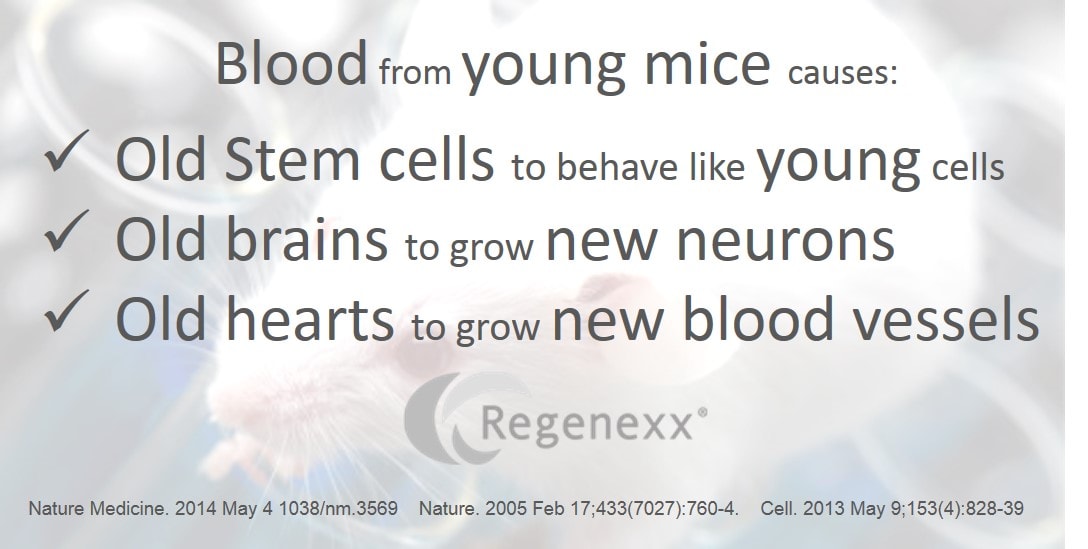Stem Cell Aging: Young Blood Makes Old Mice Young Again
Stem cell aging has been a hot research topic for years. I’ve blogged before on how old stem cells are rejuvenated by being exposed to the stuff of youth (a young tissue). Now a multi-university research team has shown through multiple experiments over many years that exposing old mice to the blood of young mice not only reverses stem cell aging, but also mends old brains and hearts.
The experiments began by reviving a century old experimental technique called parabiosis. This is where two animals share the same blood supply. Researchers studying aging tried hooking up an old mouse to a young one and found that the old mouse got younger the the young mouse got older! They then observed many crazy things happen in the old mice. Their stem cells got younger, their hearts grew new blood vessels, and their brains grew new neurons. The old mice also got smarter. It also went the other way as well. For example, the brains of young mice declined when hooked to the blood supply of an older mouse. When they removed the cells from the blood, they still saw the effects, so they learned that it’s the chemical environment in the young blood that’s reinvigorating old stem cells, heart cells, and neurons.
These experiments bring up some very interesting ethical questions. The scientists have begun to chase down the exact isolated growth factors responsible for these effects. On the one hand this is great, as knowing more about how this works may one day help optimize the process of anti-aging and could help refine therapies in many severe diseases. On the other hand, few therapies are vetted for their safety as much as a standard blood transfusion. In fact, since the blood supply we might be exposed to at any given time may be from a much younger person, this experiment has already been performed in humans countless times. So why aren’t we seeing clinical trials springing up where older and dying patients get regular blood transfusions from younger and healthy donors? This would seem to be common sense? The reason exposes some of the dark underbelly of modern science-it’s all about the money.
By following scientific reductionist theory, the scientists working in this field will eventually find specific growth factors and cytokines that work (they have already found one-GDF11). While this concept in general is helpful for increasing our basic knowledge and will pay dividends, it’s also a two edged sword. By isolating single molecules, more risk, not less will be introduced into this therapy. This is because the body doesn’t operate in a vacuum and as a rule it almost never uses only one chemical signal for anything. Instead, it likely releases a carefully timed symphony of hundreds of important growth factors, cytokines, and other chemicals to maintain youth. So the only practical purpose of finding one molecule is to submit a patent and create a pharma drug. Regrettably, it’s highly likely that this new drug will be far more dangerous than a blood transfusion.
The upshot? Young blood may be able to make old people young-or at least help their stem cells, hearts, and brains stay young. I only wish we had a practical side to science that was immediately able to see that these findings need to be quickly translated into suffering patients at the same time we’re figuring out why this happens.

If you have questions or comments about this blog post, please email us at [email protected]
NOTE: This blog post provides general information to help the reader better understand regenerative medicine, musculoskeletal health, and related subjects. All content provided in this blog, website, or any linked materials, including text, graphics, images, patient profiles, outcomes, and information, are not intended and should not be considered or used as a substitute for medical advice, diagnosis, or treatment. Please always consult with a professional and certified healthcare provider to discuss if a treatment is right for you.

